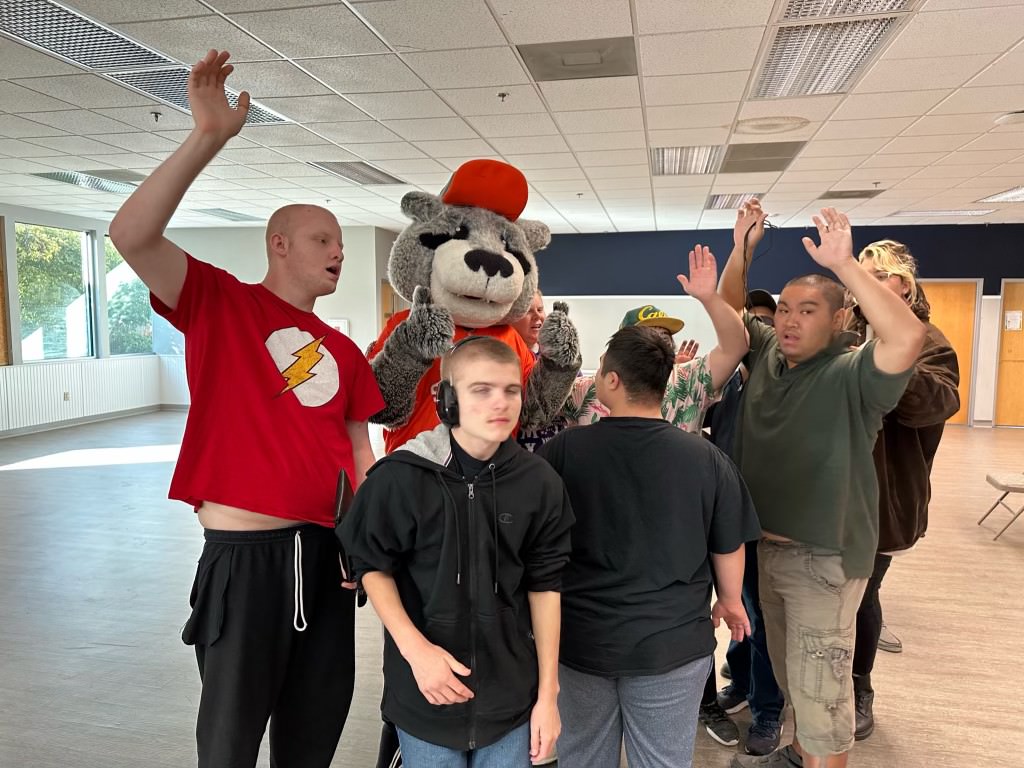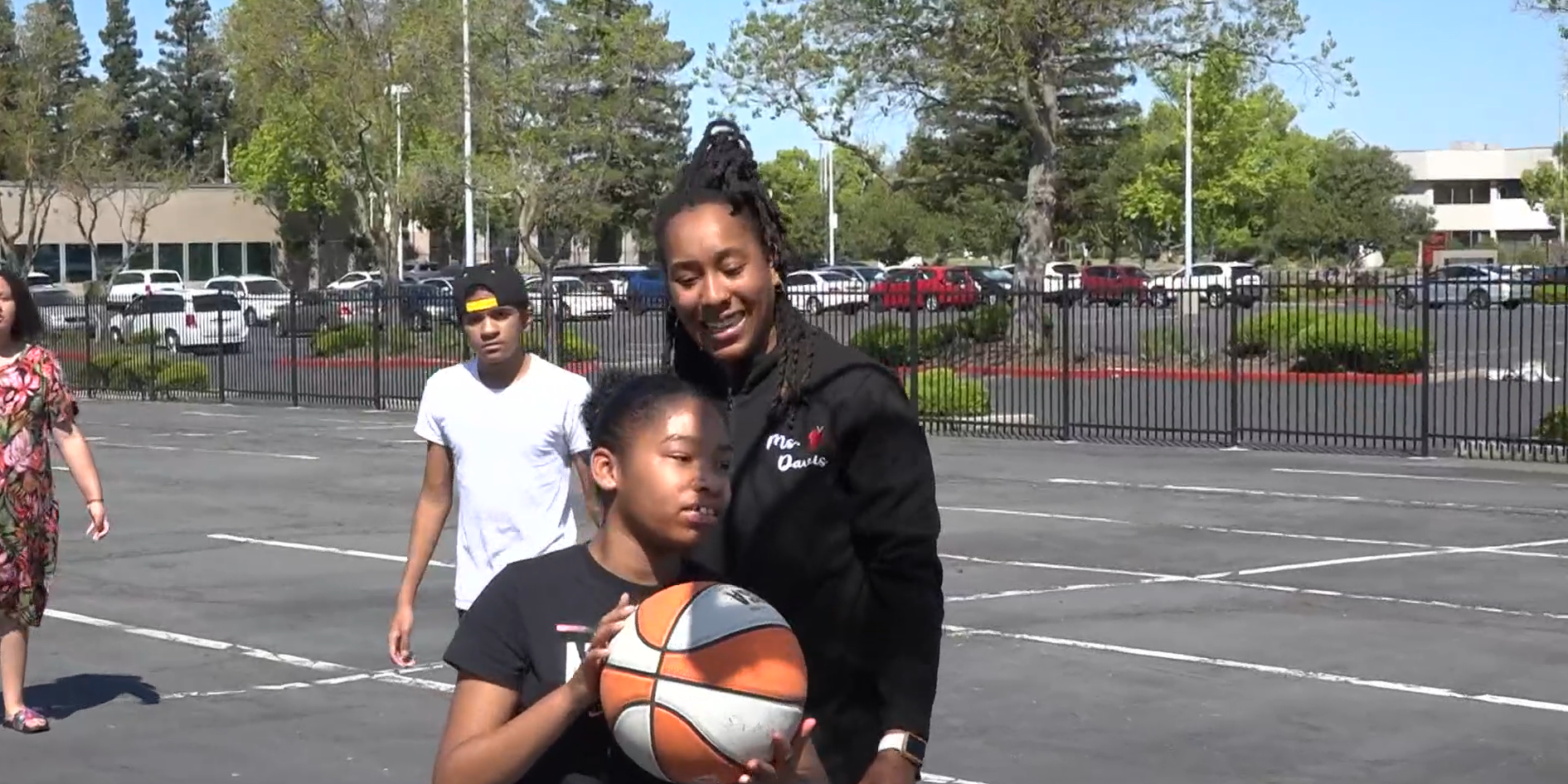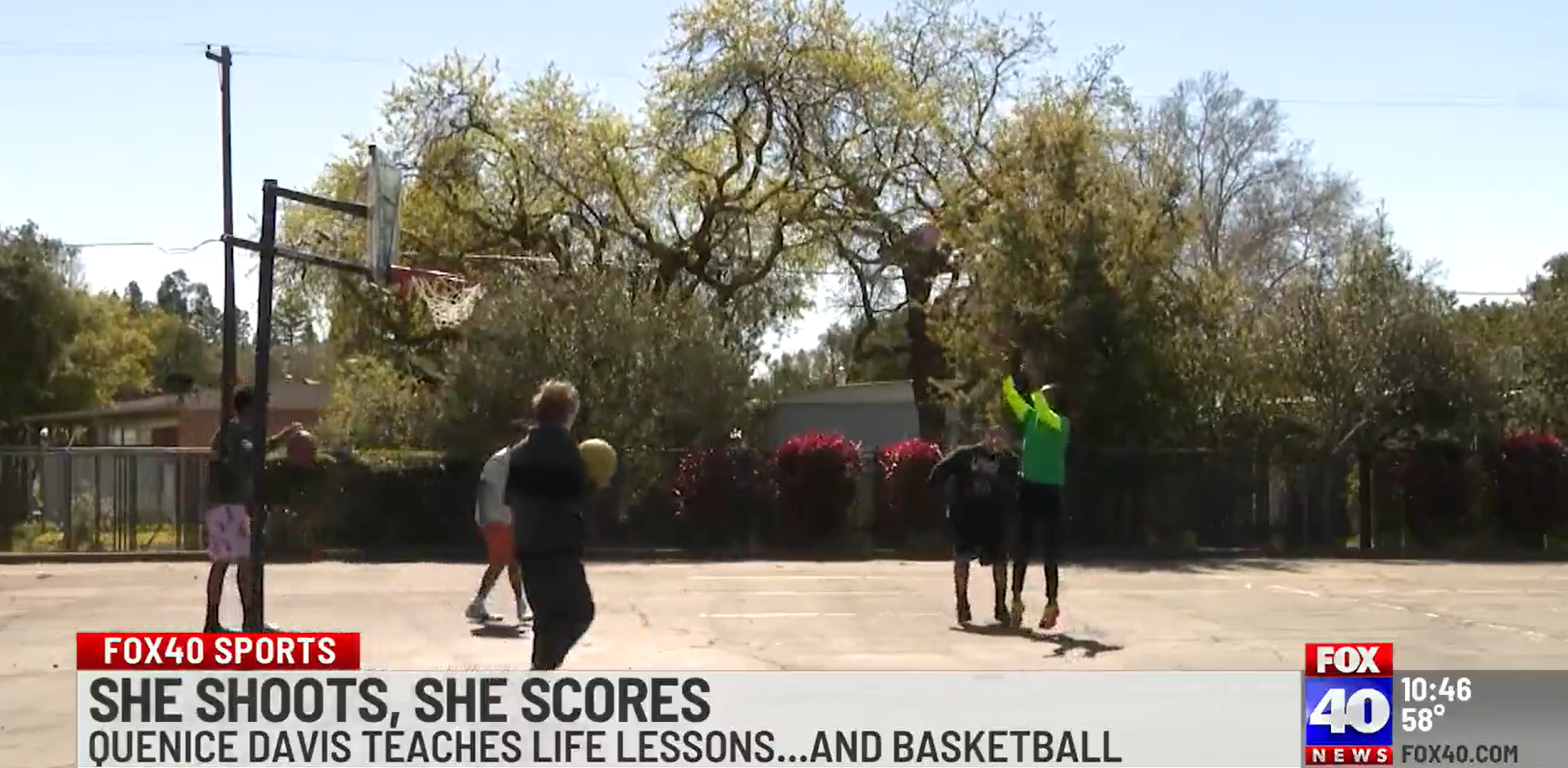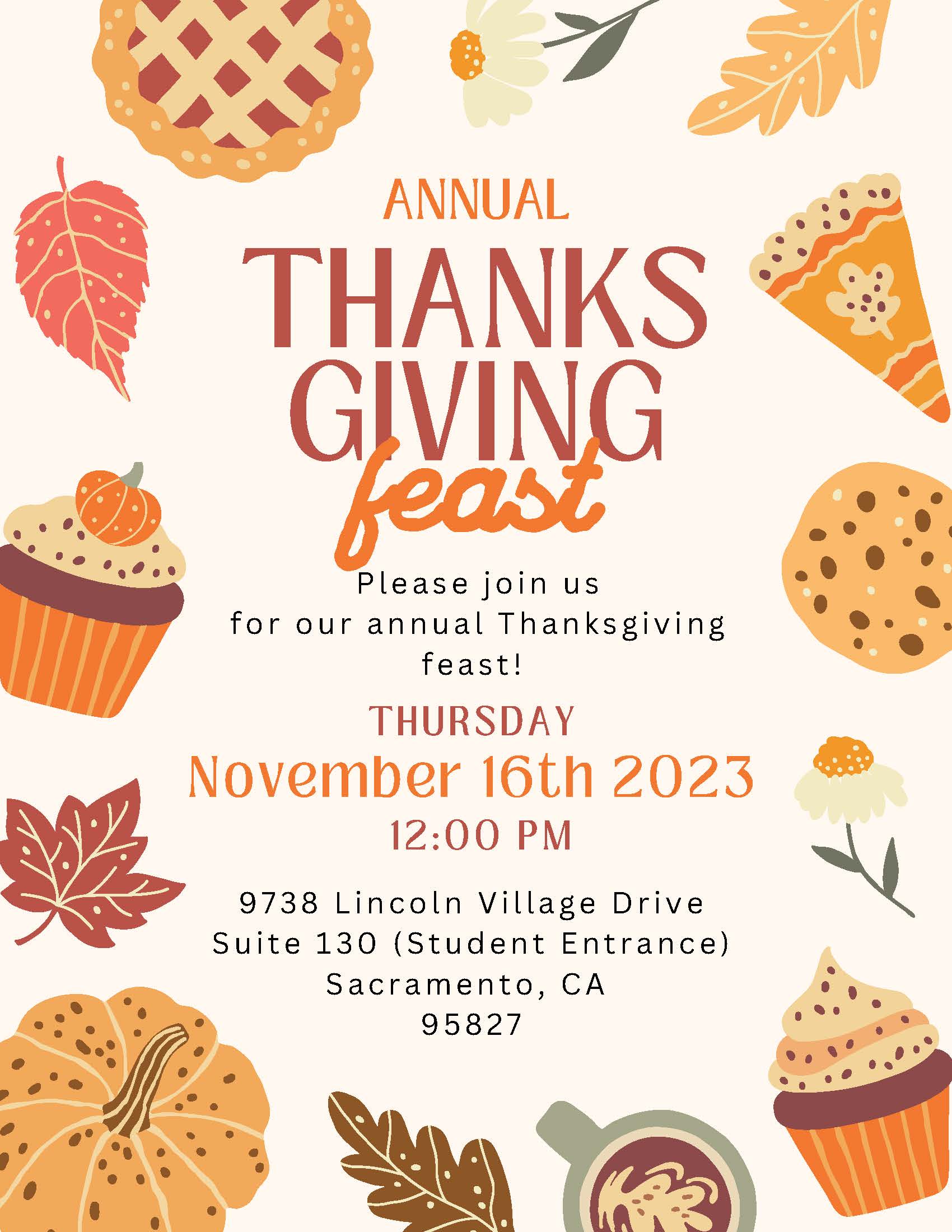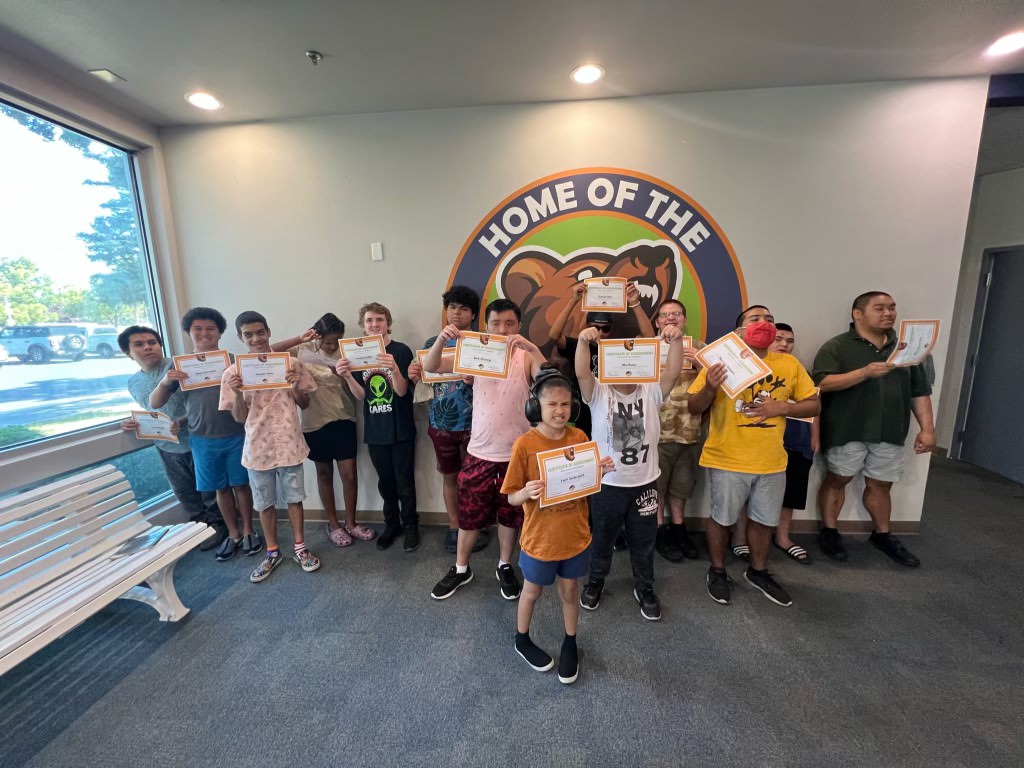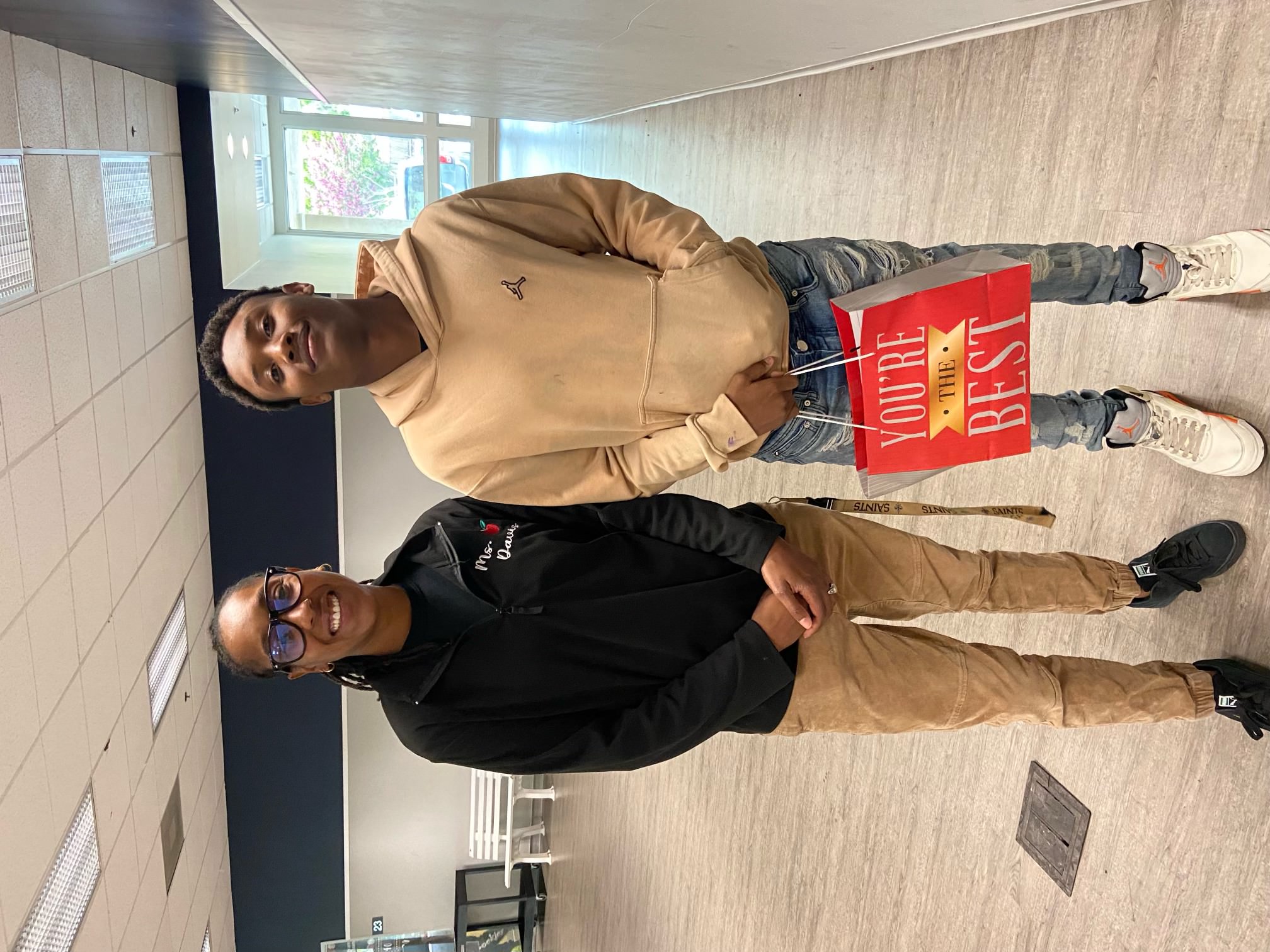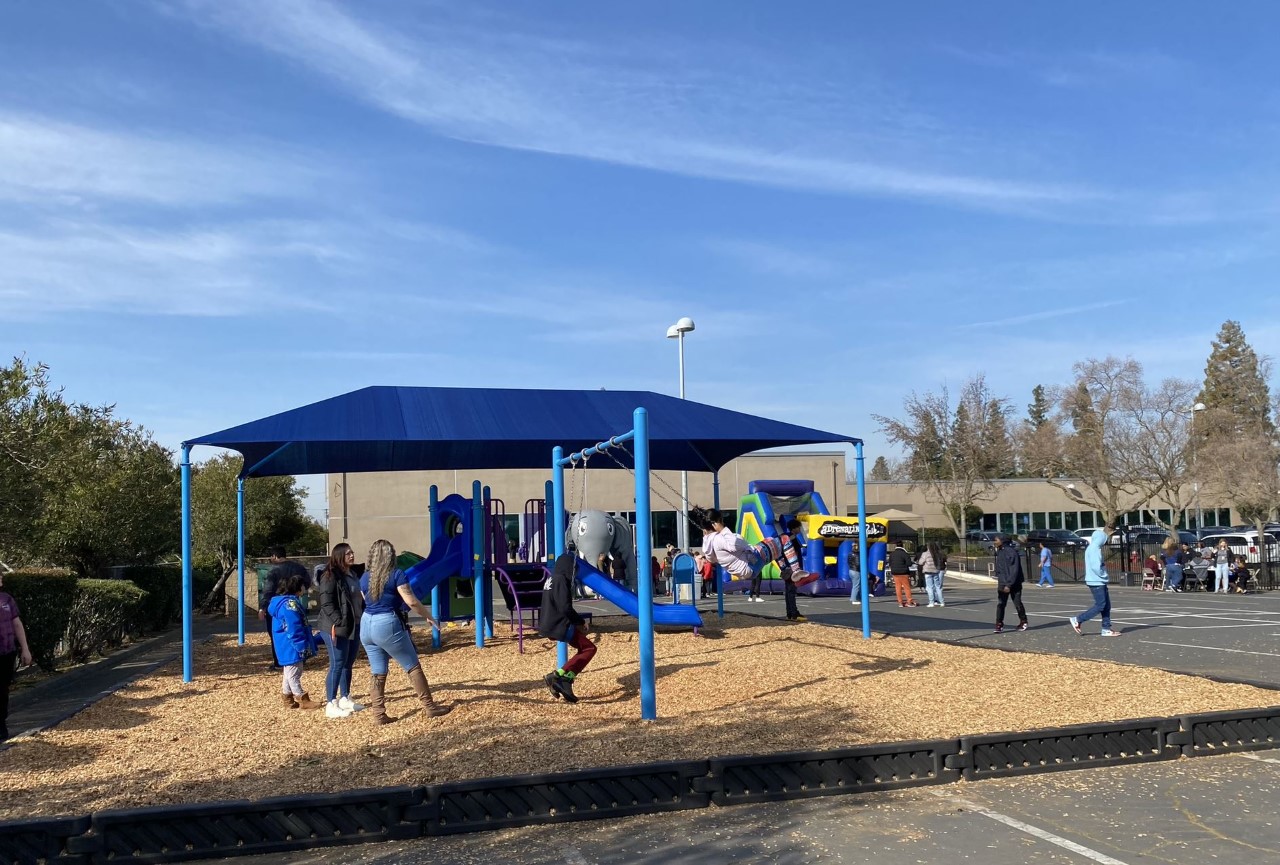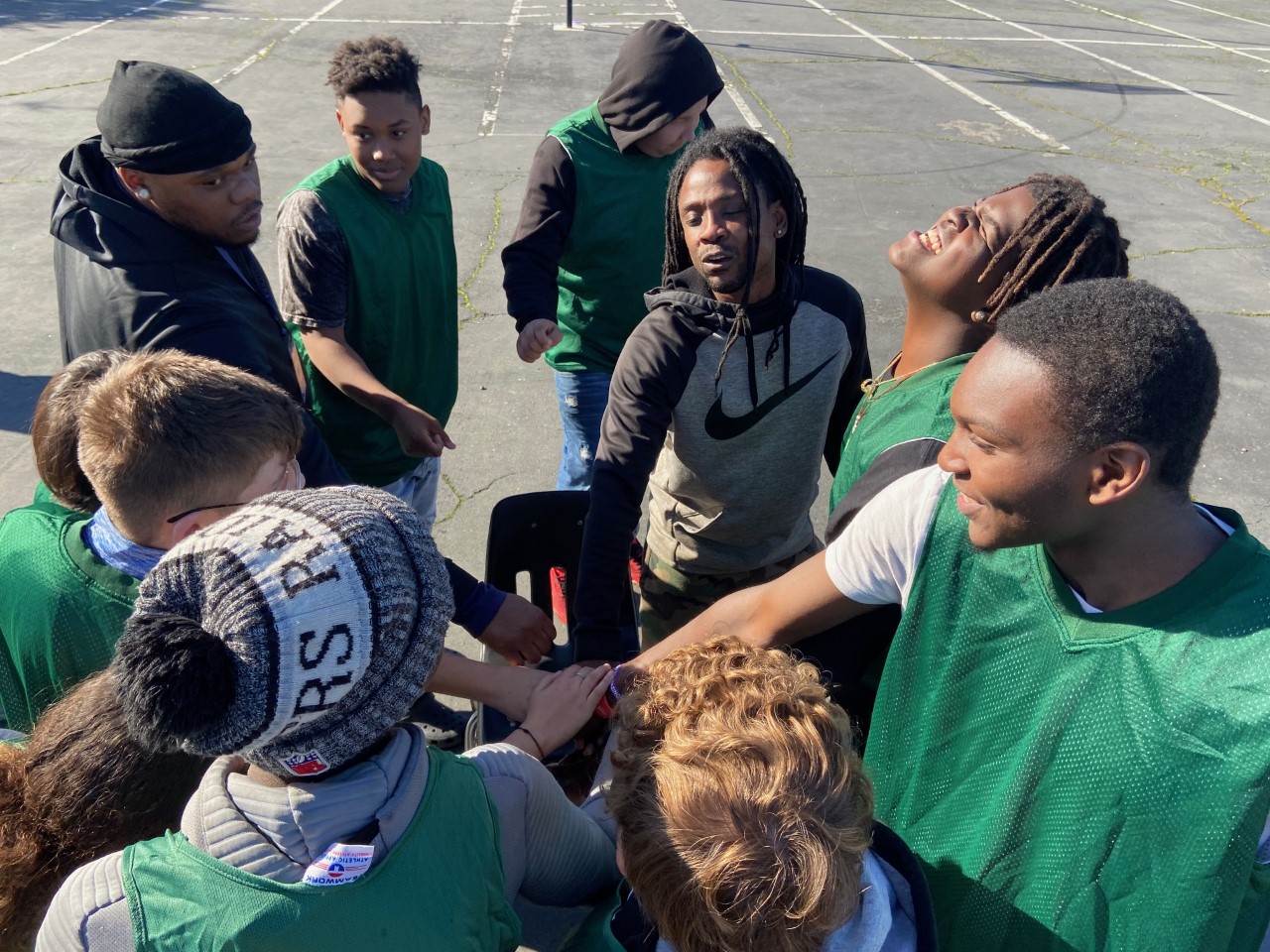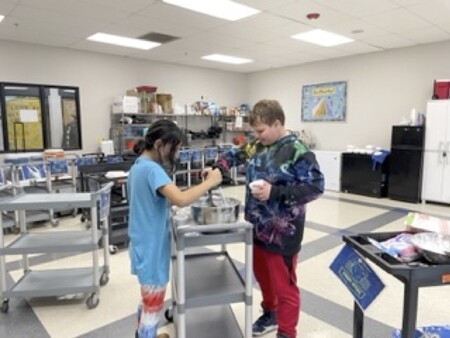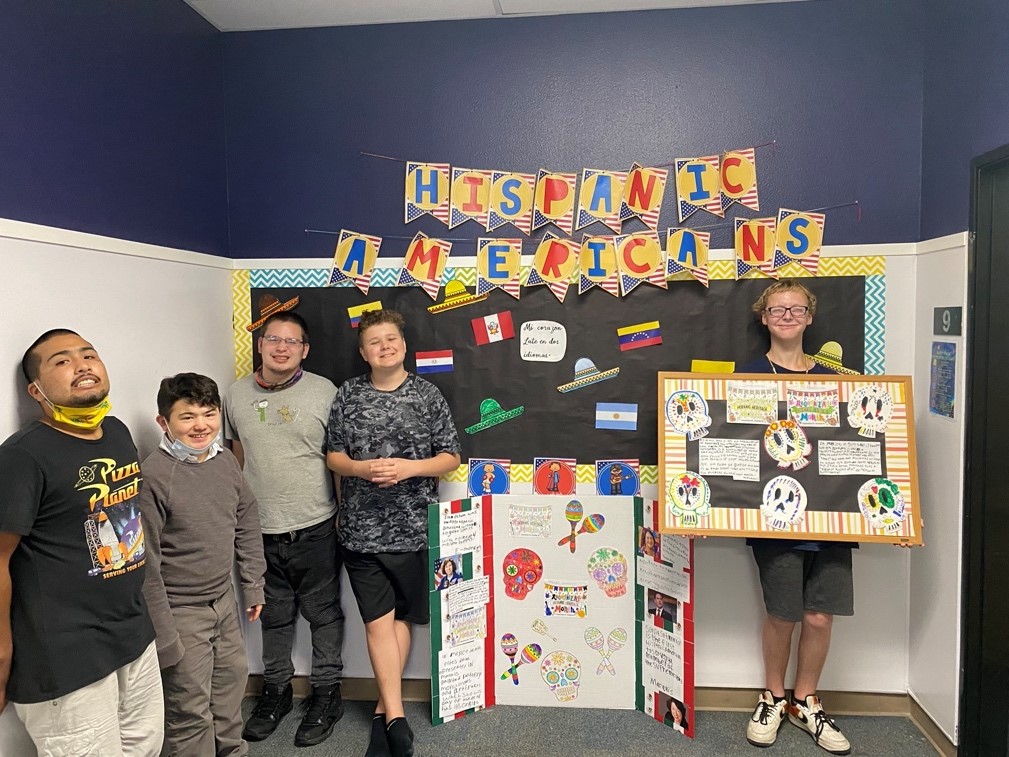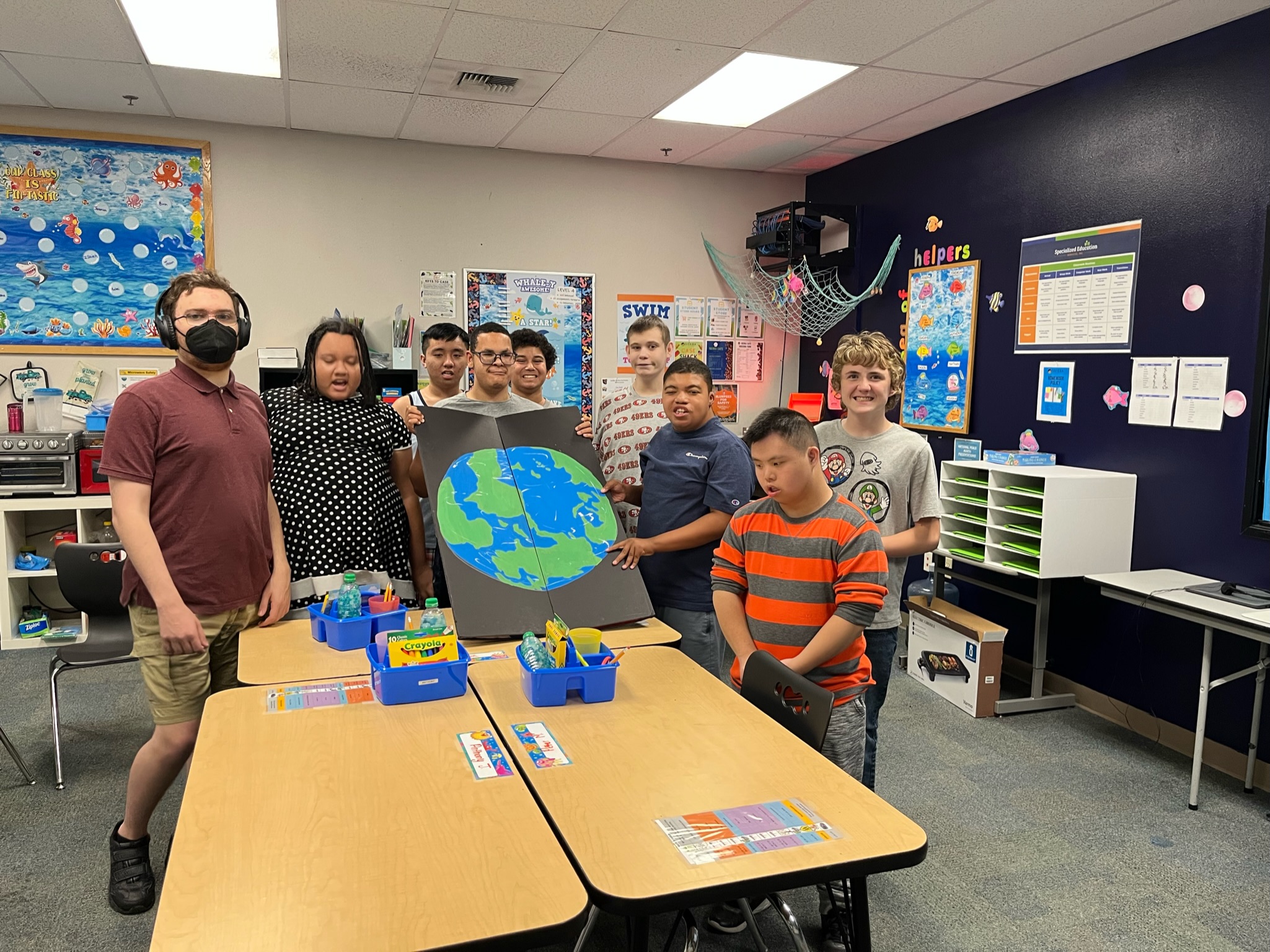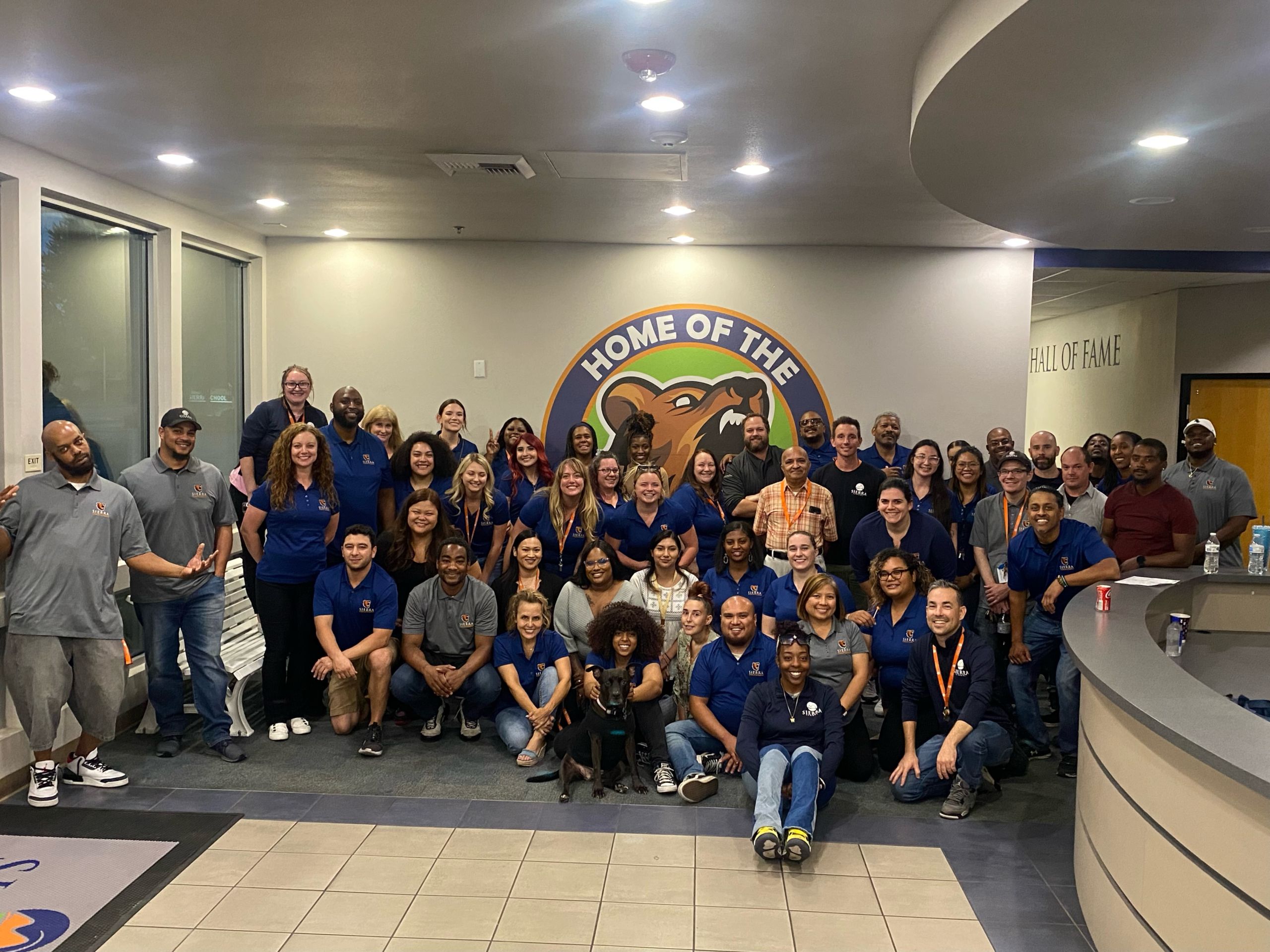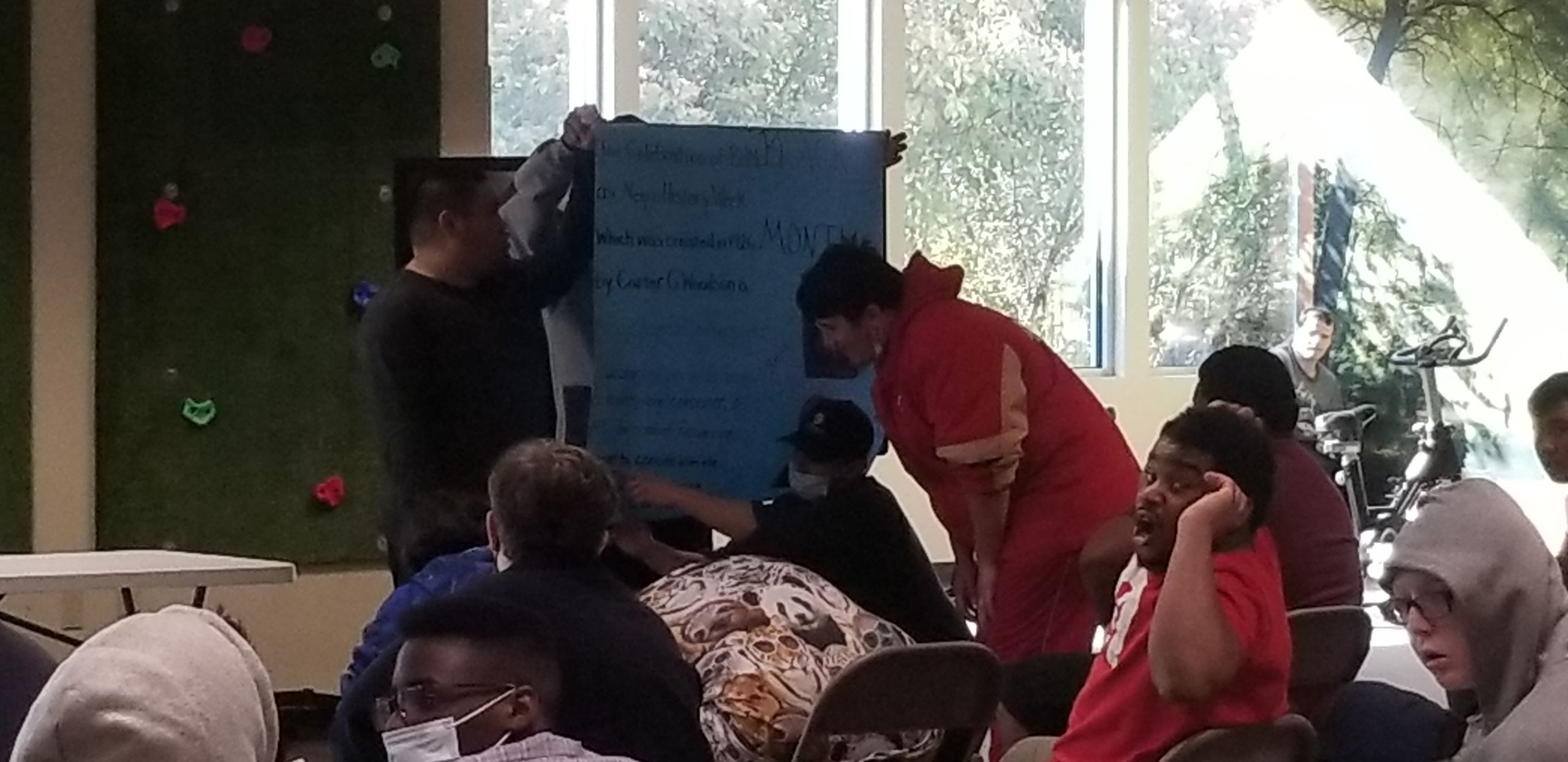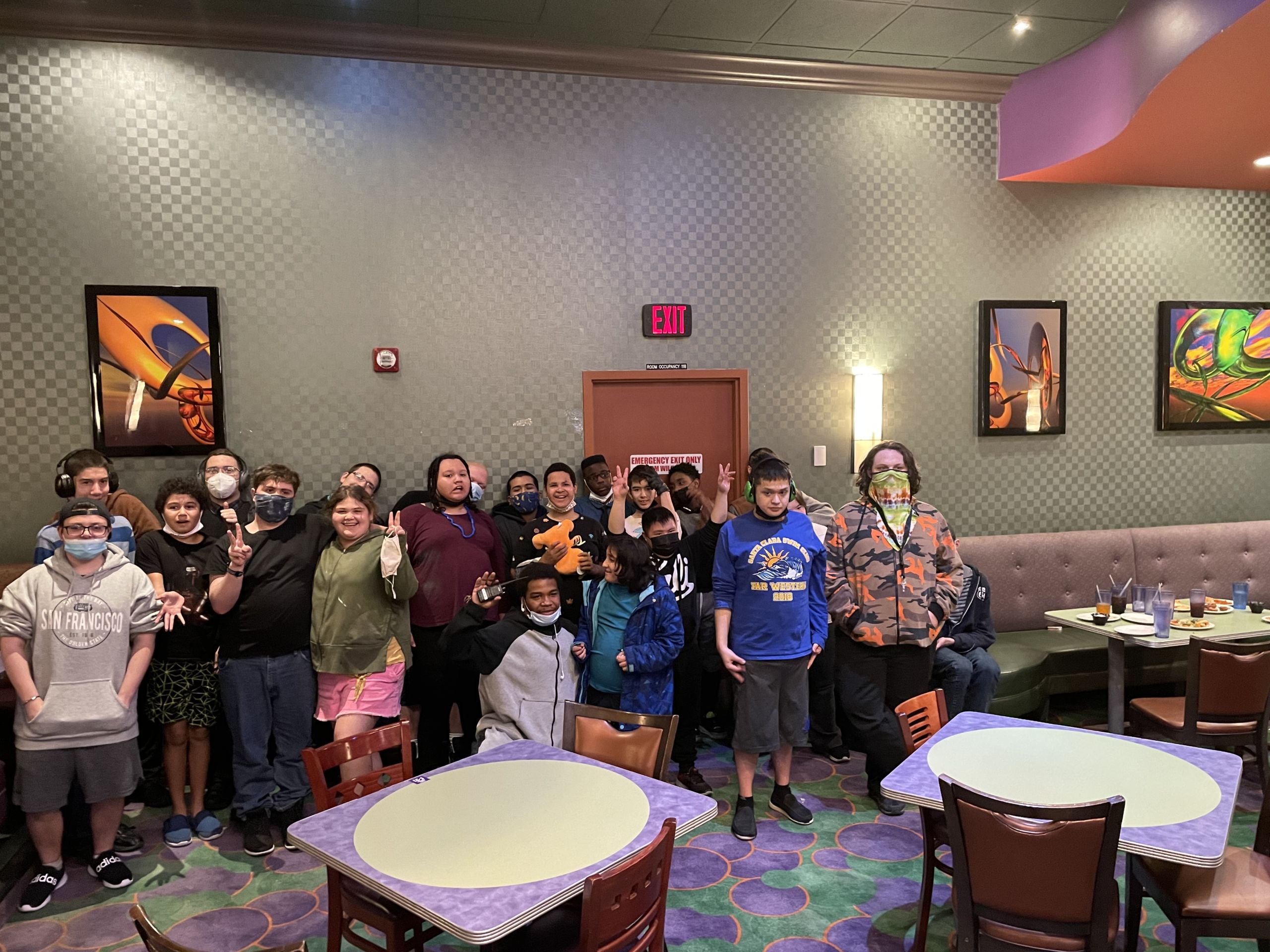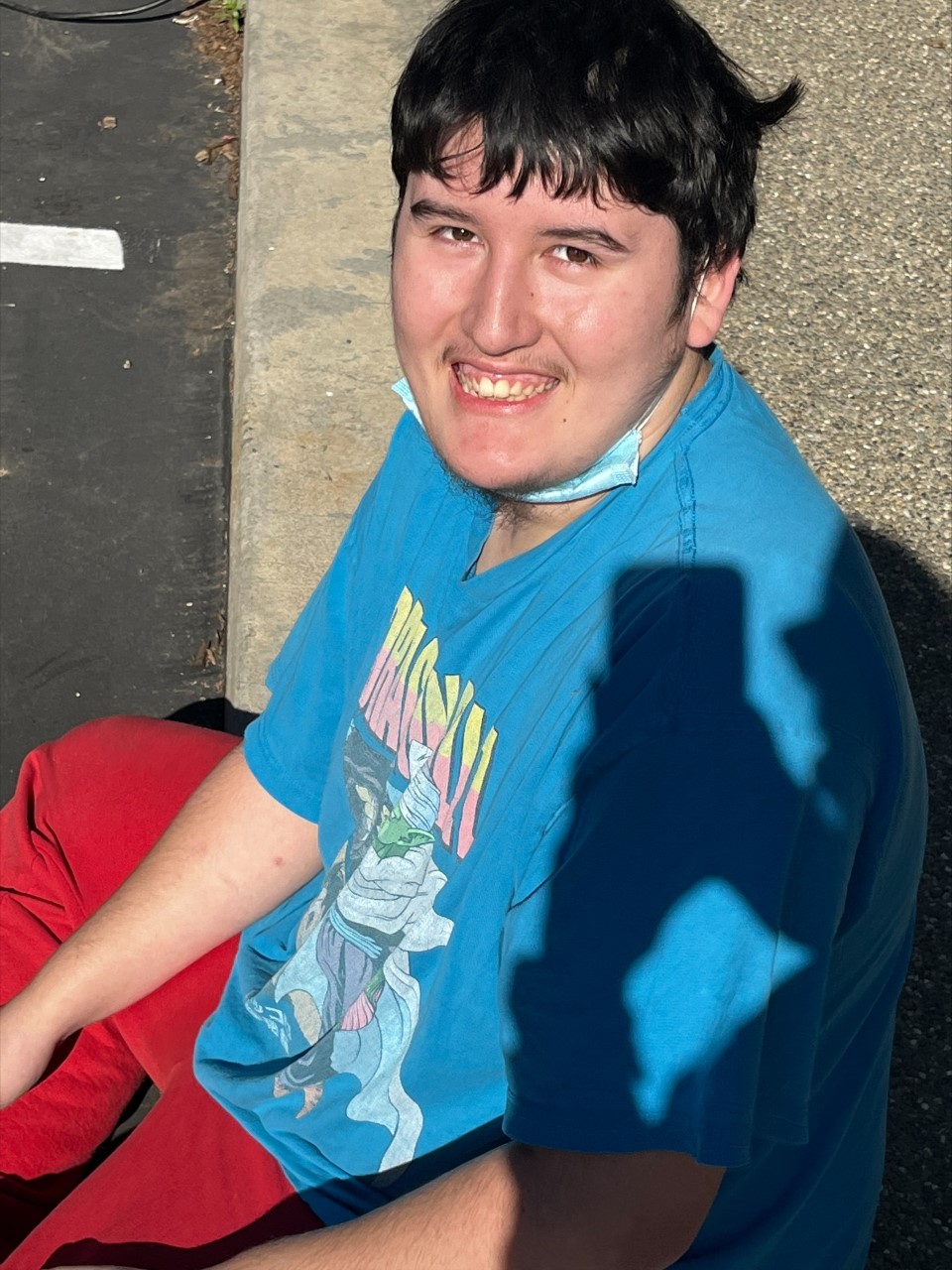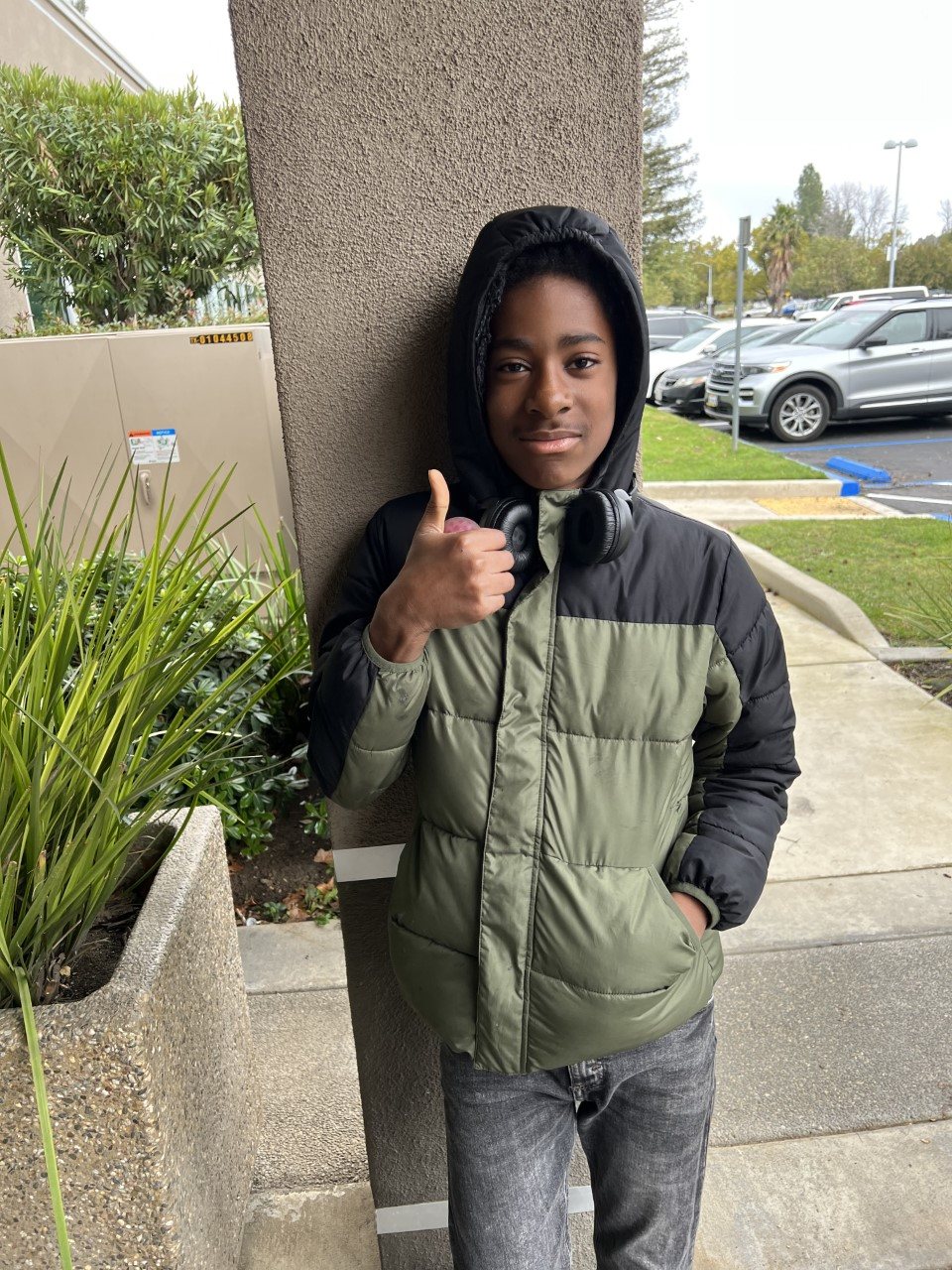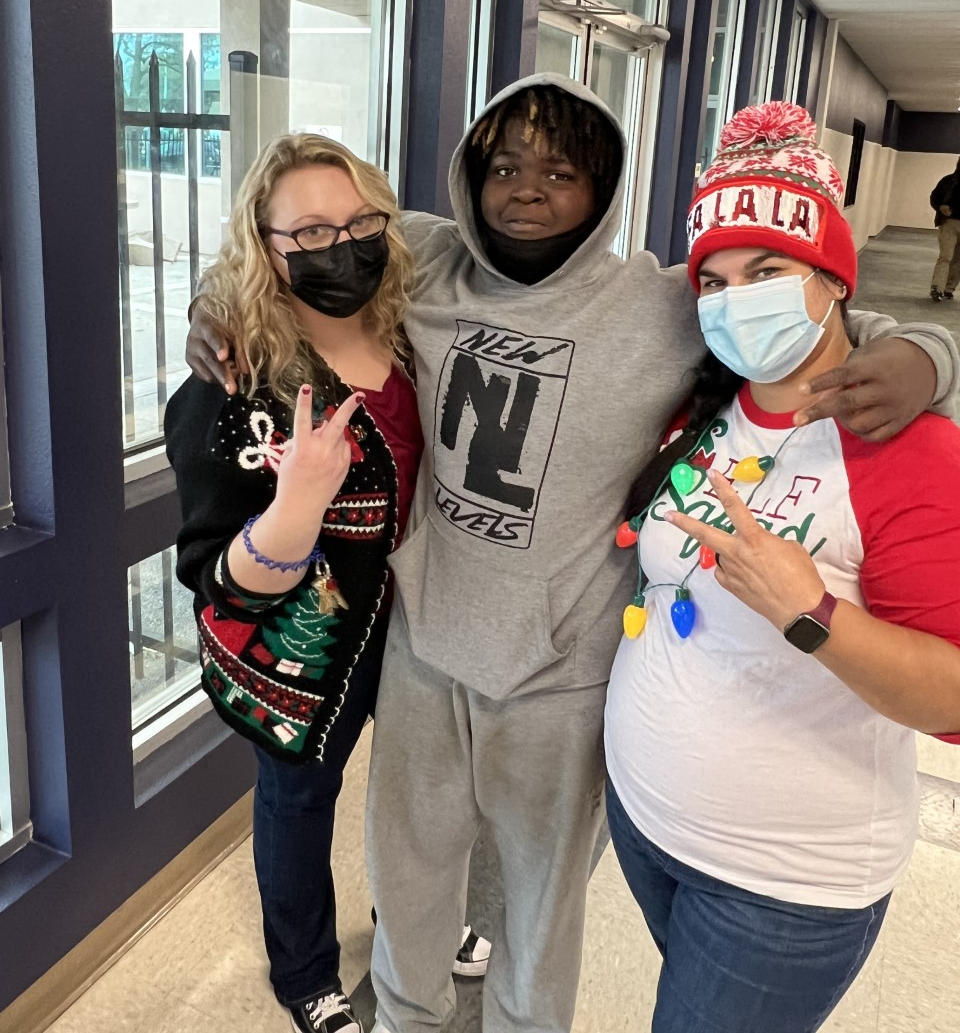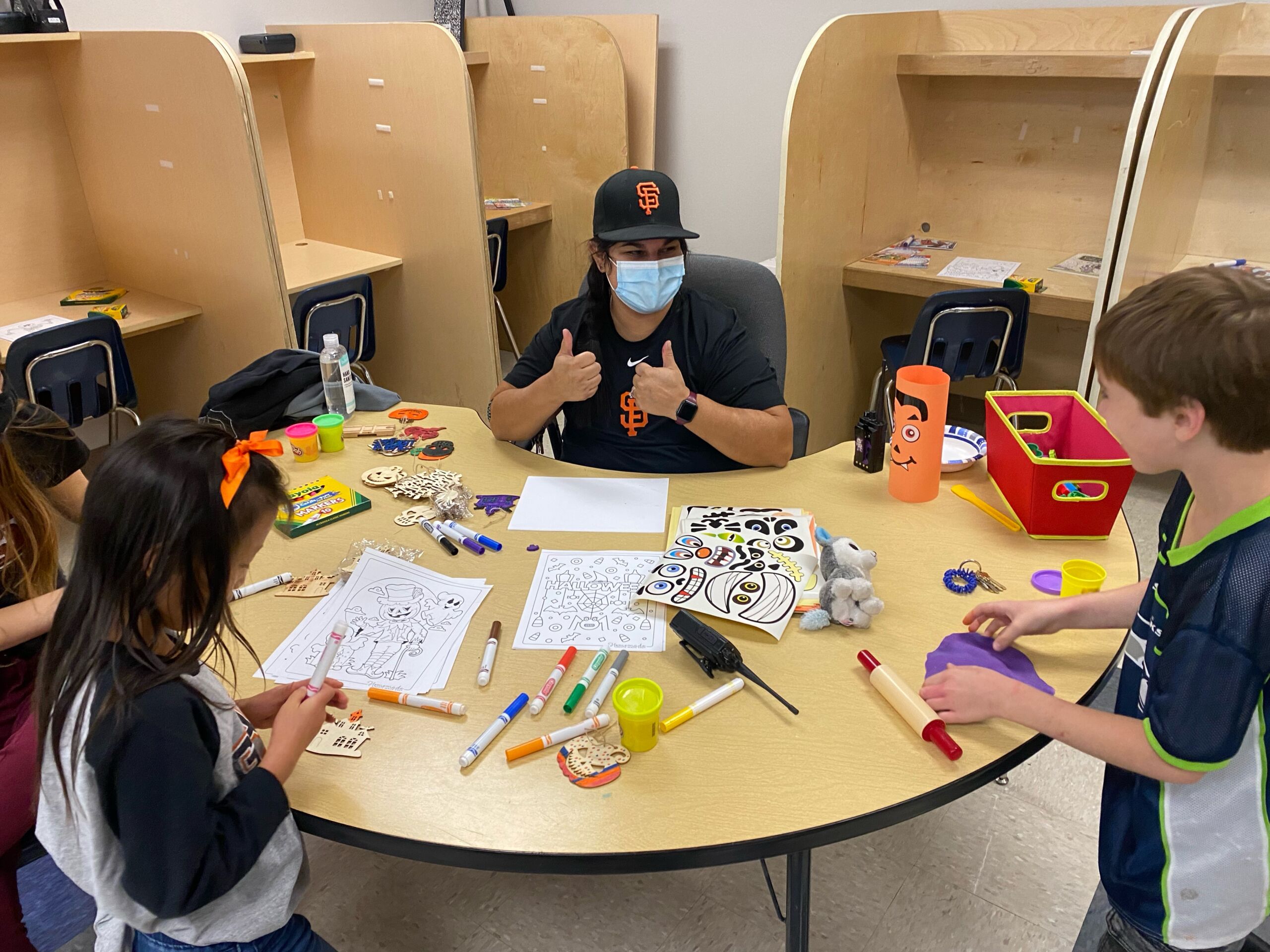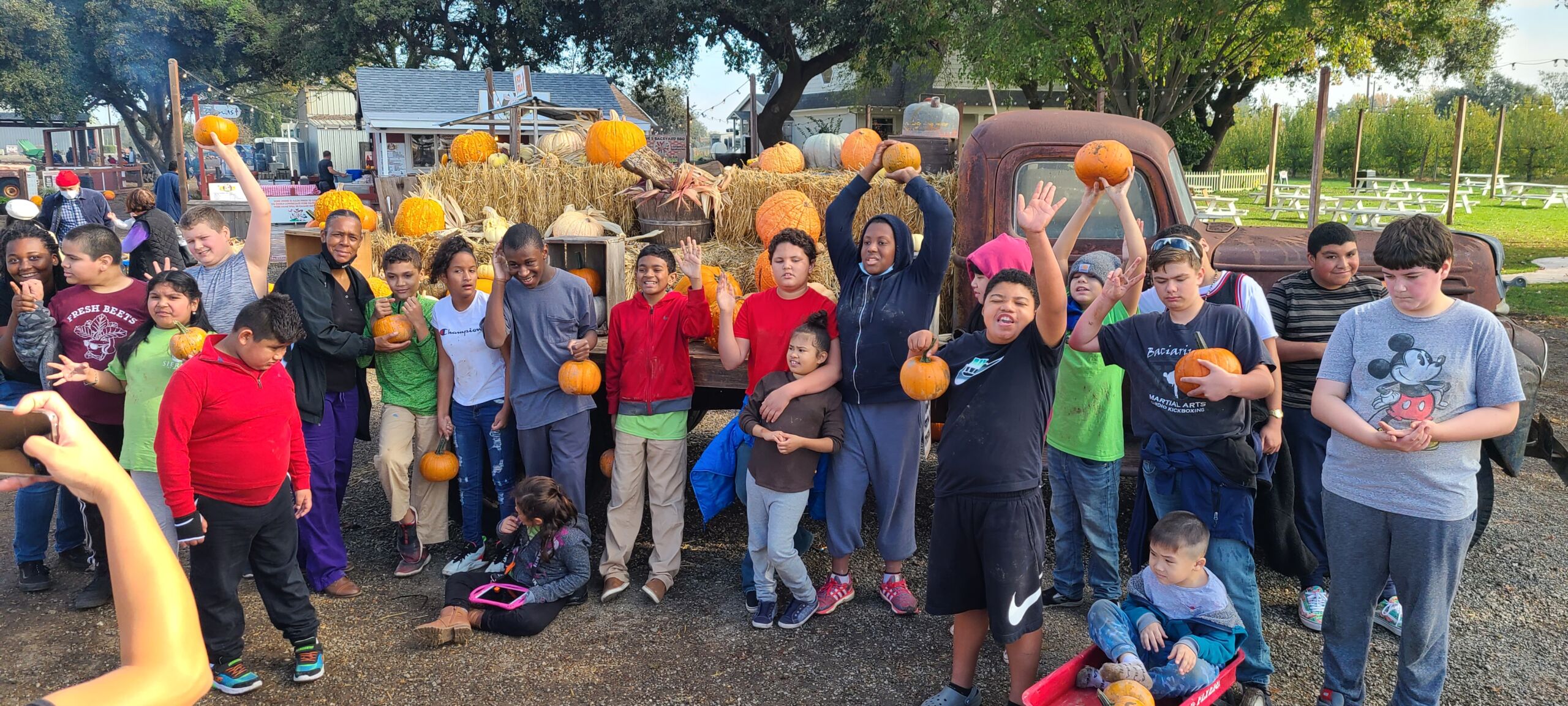Sierra School of Sacramento
Sierra School of Sacramento is a nonpublic, special education school that serves students from K – 12th grade (ages 5-22). We utilize unique education models, an effective positive behavior management system, and multiple mental health techniques to increase academic awareness, develop social skills and cultivate proper classroom behavior in each of our students. Our goal is to work along side the student to improve academic and social success so that the student can return to a least restrictive setting. Our dedicated staff and teachers are committed to the growth and safety of each student.
Contact Us
Download Brochure

- (P) 916.930.6189
- 9738 Lincoln Village Drive, Suite 100
Sacramento, CA 95827
Meet the Team
Lisa Maher, Executive Director
[email protected]
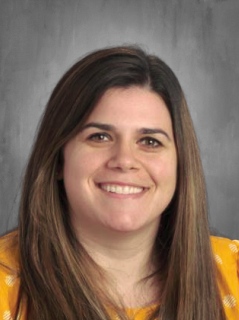
Lisa joined the Sierra team in the Spring of 2013 as a 1:1 instructional assistant after graduating from Humboldt State University with a bachelor’s in social work in the Spring of 2012. She became a teacher in 2015 and taught both elementary and high school students at Sierra Lower. After teaching, she moved into a curriculum and instruction role where she trained teachers in assessment, curriculum, and instruction throughout the Northern California Sierra Schools. During this time, she earned her master’s degree in Education and her mild/moderate teaching credential. In January 2022, she began working permanently in Sacramento to create a successful merger of two campuses. She is thrilled to be a part of the growth of Sierra School of Sacramento. Her goal is to create an inviting and meaningful place for students to grow their social-emotional & behavioral skills as well as their academic performance. In her spare time, she enjoys playing with her dogs, being outside and wake surfing.
Dustin Hefner, Director BEST Model
[email protected]

Dustin Hefner has been in the special education field for 18 years, with the past 4 serving as the Director of Sierra Lower School of Sacramento. He started his career as an after-school recreational technician before moving to the school program as a classroom and 1:1 aide. During his time, he worked as a lead instructional assistant, group home manager, head of training, and school administrative manager. He looks forward to continuing his journey, and looks for new and innovative ways to get his students the supports and knowledge they need to matriculate back to public school and ultimately lead the lives they deserve. Mr. Hefner lives in Sacramento with his wife, two daughters, and two dogs. He hold a master’s degree in business administration and is currently pursuing Board Certification in Behavior Analysis (BCBA).
Quenice Davis, Associate Director Academic Model
[email protected]

As a lifelong learner, and a former professional athlete, Ms. Davis brings a “whatever it takes”, team first, mindset to the leadership team. Ms. Davis has been a member of the Sierra family since May, 2018.
She began her career with Sierra as a Teacher Assistant/Van Driver in the BEST model program. After proving her value and dedication to our students, families and community, Ms. Davis was promptly promoted to a teacher in January of 2019. In her new role, she worked with our transition age students (18-22) in what is not our PALS program.
In August of 2021, Ms. Davis decided to switch directions and began working with our Academic/ED students. While thriving in that role and achieving great academic success paired with significant behavior reduction from her students, Ms. Davis began gaining recognition from higher administrators in the company.
While ensuring her students were reaching their goals, Ms. Davis was also accomplishing great things in her personal life. In May of 2023, Ms. Davis graduated from the University of Pacific with her Masters degree in Special Education. Following this major achievement, Ms. Davis earned Teacher of Year and earned a promotion to her current position, Associate Director.
Lincoln Dupree, Associate Director
[email protected]
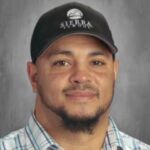
Lincoln Dupree was born in Houston and moved to Sacramento when he was 12. It was challenging going from the country to living in Del Paso Heights, going from crawfishing and hunting to dealing with a lot of the negative peer pressure and stress due to the low socioeconomic town in which he lived. His mother encouraged him to find positive friends and signed him up for football for the Grant Rams. From there, Lincoln found an enjoyable hobby. The hobby turned into a passion and for the next 20 years, Lincoln played football and received a free education from Eastern Michigan University. After his playing career ended, Lincoln moved back to Sacramento where he fell in love with helping at-risk youth and helping staff work and support the at-risk youth. From a line staff in a group home to an administrator role, Lincoln has experienced a variety of roles and gained valuable experience at developing ways to support delicate youth. In the future, Lincoln looks forward to expanding that role to help support students outside of the school setting; foster care, homelessness, and abuse survivors.
Sarah Carden, BCBA
[email protected]
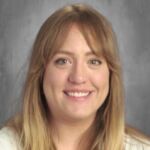
Sarah Carden, is a passionate behavior analyst who has been working with children with disabilities for over 10 years. The majority of her experience has been with children diagnosed with autism, providing ABA therapy in home. She looks forward to continuing to grow and learn as a BCBA. Within her role at Sierra School she hopes to support an already incredible team and develop innovative ways of helping students reach their greatest level of independence. She holds a master’s degree in teaching and is a board certified behavior analyst. Sarah lives in East Sacramento with her 4 year old son.
Teresa Vinciguerra, Therapist
[email protected]
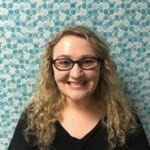
Teresa Vinciguerra is a licensed marriage and family therapist (LMFT) who has been providing mental health services in the Sacramento area for seven years. Ms. Vinciguerra enjoys working with children of all ages and backgrounds and utilizes an integrative therapy approach, to improve the emotional and behavioral challenges of each student. She is passionate about providing developmentally appropriate individual and group counseling services to her students and loves to see each child grow and blossom into their own unique person! In her free time, Ms. Vinciguerra likes to hang out with her family, friends, and pets. Ms. Vinciguerra has been working at Sierra Lower School of Sacramento since 2019.
Nicole Curran, Therapist
[email protected]

Nicole Curran is a licensed marriage and family therapist, who graduated from Sacramento State University in 2015. Mrs. Curran was an intern at Sierra School during graduate school and was fortunate to come back as a full-time therapist. She greatly enjoys working with the diverse range of students to help meet their goals. Mrs. Curran provides a whole system approach by integrating various theoretical approaches. She enjoys working with individual and group settings. In her free time, Mrs. Curran loves to craft and spend time with her family.
Janah Mitchel, School Therapist
[email protected]

Janah Mitchell is a Registered Associate Marriage and Family Therapist. She has worked in mental health services for five years. Ms. Mitchell enjoys working with children and uses a variety of approaches (including Cognitive Behavioral Therapy, Play therapy, and a collaborative style) to improve students’ mental health and work on students’ social emotional goals. She loves to help kids learn how to advocate for themselves and grow into amazing humans! Outside school, Ms. Mitchell loves to read, knit, bookbind and hike. She started working at Sierra School of Sacramento in November 2022.
Marcus McRae, School Therapist
[email protected]

Marcus McRae is a Registered Associate Marriage and Family Therapist and an Associate Professional Clinical Counselor who graduated from Saint Mary’s College of California in 2022. Mr. McRae has worked in the mental health field since 2015 and is passionate about helping students achieve their academic, personal, and social-emotional goals. Mr. McRae utilizes a person-centered approach with elements of play therapy and cognitive behavioral therapy in order to connect with students. Outside of school, Mr. McRae enjoys being active, playing basketball, and spending time with his family. He began working for Sierra School of Sacramento in January 2023.
Stacey Williams, Lead Transition Coordinator
[email protected]
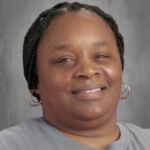
Stacey Williams has worked at Sierra School since November of 2016, after relocating from Pennsylvania. She began working as a paraeducator before taking on the role of Transition Coordinator. Stacey’s main focus is to provide and motivate her students with the skills necessary to survive after high school. It can be overwhelming for anyone entering the “real world,” but factoring in a disability often intensifies that feeling. Stacey’s goal to prepare students for the unexpected. She is always looking for ways to better herself, so that she can better serve students – and that is why she decided to complete her degree which she expects to complete in March 2022.
Misha Renfroe, Transition Coordinator
[email protected]

Misha Renfroe is a Transition Coordinator at Sierra Upper School. Misha has a passion for working with children, teens & young adults with special needs as well as behavioral issues. She has been at Sierra School for over six years. Misha has worked as a Teacher’s Aid and has special training in Crisis Intervention and Harm Reduction. She also mentored at risk youth at the Wind Youth Services day center for a little over six years. Currently, she specializes in making sure that all students in Sierra have the tools needed to have a smooth transition into adulthood. She is blessed with two beautiful children, family, and friends. Misha believes that all students can overcome any & all obstacles with the proper guidance, and anything is possible with hard work and perseverance.
Rosalynn Liaiga, Behavior Support Specialist
[email protected]
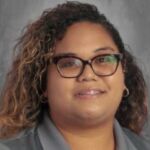
Rosalynn was born and raised in San Francisco. At the age of 13, Rosalynn and her family moved to Sacramento in 2005. She graduated from Heald College with an A.S. In Criminal Justice and A.A. In General Education in 2013. She had the privilege of working with at risk adolescents as a Residential Counselor at a Treatment Group Home while attending college. She continued working there until she found her passion which is working with teens/children that are at risk and/or have special needs. Rosalynn has been with Sierra School since 2017 and has worked in roles that have challenged her in many ways. Having a big family that can relate has inspired her to want to continue working with students.
Felicia Facio, Behavior Support Specialist
[email protected]
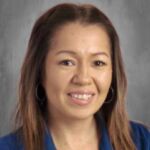
Felicia Facio was born and raised in Sacramento CA. Felicia has been been working in the special education field for 17 years, with the past 6 years working at Sierra Lower School of Sacramento. She started her career in 2004 working with special needs children, teens and adults with emotional and behavioral challenges at a non-public school as a Teacher Assistant and 1:1 aide. That is when she discovered her passion for working in this setting and realized this is what she was meant to be doing. Outside of the school setting she also worked as an ABA therapist providing in home therapy in clients homes with children diagnosed with Autism. Felicia looks forward to continuing her journey and education at Behavioral University to better serve our students and looks forward to providing the best support she can to help with their growth and living the lives they deserve. Felicia has one daughter and three dogs and loves hanging out with friends and family on her spare time.
Jules Thompson, Behavior Support Specialist
[email protected]

Jules Thompson, joined the Sierra team in the fall of 2021 as an Assistant Teacher. Before working at Sierra School, Mr. Thompson was a Para-educator at another local School District. During that time he also coached wrestling at a Middle School and produced a girl’s state champion, a girl’s state champ runner-up, and a Tournament of Champions winner. Jules is one of Sierra’s pro-act trainers and provides coaching to staff on our CASE principles. He also supports some of our all-star Grizzlies around campus!
Kelsey Buell, IEP Coordinator
[email protected]
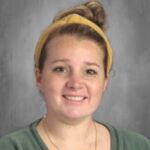
Kelsey Buell started at Sierra School in 2017 as an elementary academic model teacher and then transitioned over to the administration team in January 2021. She holds her bachelor’s degree in psychology from Sonoma State University and is back in school working on obtaining her Bachelor of Science in Nursing (BSN). She is a mother of two, dog mom, and a proud military wife. She enjoys spending time with family and friends, traveling, organizing, and planning events. She loves working with the staff and students at Sierra School and supporting students with their IEPs.
Katelyn Longstreth, Administrative Assistant
[email protected]
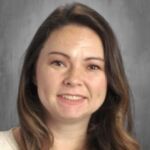
Katelyn started with Sierra School as an Administrative Assistant in 2020. She wears many hats on campus but mainly handles all campus requests, maintenance, payroll, accounts payable, and all staff-related tasks. Before starting with Sierra school, She spent 5 years as an instructional aide with a local district. Her knowledge and experience she brought with her really benefit our campus. Outside of work, Katelyn is married with one child. She enjoys spending time with her family and going camping.
Sharay Koen, IEP Coordinator
[email protected]

Sharay Koen has been with our company since March 2018 and joined the administration team in May of 2022. She has made an incredible addition to the team, She started out as an assistant teacher, moved into a teaching role in December of 2018 and was nominated (company-wide) as teacher of the year for the 2021-22 school year. Her knowledge of students with disabilities and her experience transferred seamlessly into her new role. She currently handles student enrollment, grades/transcripts, record maintenance and our district and service billing.
Janae Mark, Transition Coordinator
[email protected]
Janae Mark has worked for Sierra School since 2022. She was born in Sacramento raised in Merced and moved back to Sacramento finishing my high school years. Janae is the youngest of 6 and a twin so she is aware of the big environment and variety of personality. Janae believes that “today is a good day to have a good day”. Janae main goal is to remind the students that they’re capable of having the day they want with their self-perseverance. She states that it can be daunting when you feel like because you had one hiccup at the start of the day it will be a day full of It. But it’s okay to make mistakes it’s about how you move forward from them, and what you decide to do differently. Janae is motivated and inspired by all backgrounds to do her very best to extend help to each one of the students with a little bit of grace.
Kili Silafau, Behavior Support Specialist
[email protected]
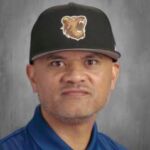
Kili has worked with young people practically his whole adult life. Started with youth groups at church, to non-profit groups for troubled teens from the inner city to four years of working with young people on the spectrum in a school setting, then another four years with young people that are emotionally disabled in a locked-down facility, and several more years with young people in the group home setting. In 2012, Kili made a career change that allowed him to still work with young people in a different, but minimal capacity.
In 2021, living overseas, but visiting family here in Sacramento, Kili was stuck in Sacramento due to a travel ban caused by a COVID outbreak on the entire island where he lived. After two months of being stuck in Sacramento and the travel ban with no end in sight, Kili, out of boredom, decided he might as well work and earn some money while stuck here. After making a phone call to a long time friend who was working for Sierra to inquire about employment, he was encouraged to apply at Sierra School. Kili joined the Sierra team in September of 2021 and started as a TA. Eventually, due to providential events, what was supposed to be a temporary situation, has become a permanent one with Kili relocating back to Sacramento. He is currently a Behavior Support Specialist and daily finds joy in supporting his fellow staff members and advocating for the students of Sierra School to succeed in life despite challenges they have and are currently facing.
Our Students
Students are referred by their school district to attend Sierra School and are generally in grades K–8 (aged 5 to 14). They face disabilities in a variety of areas, including Autism, Intellectual Disability, Emotional Disability, Multiple Disabilities, Speech and Language Disabilities, Other Health Impairments, Speech and Language Impairment, and more.
Our Staff
We are proud to employ certified special education teachers, marriage and family therapists, a speech therapist, and provide occupational therapy.
Utilizing four specific instructional rotations, students are assessed academically, gain self-regulation skills, learn with district-aligned academic curriculums, and utilize integrated technology.
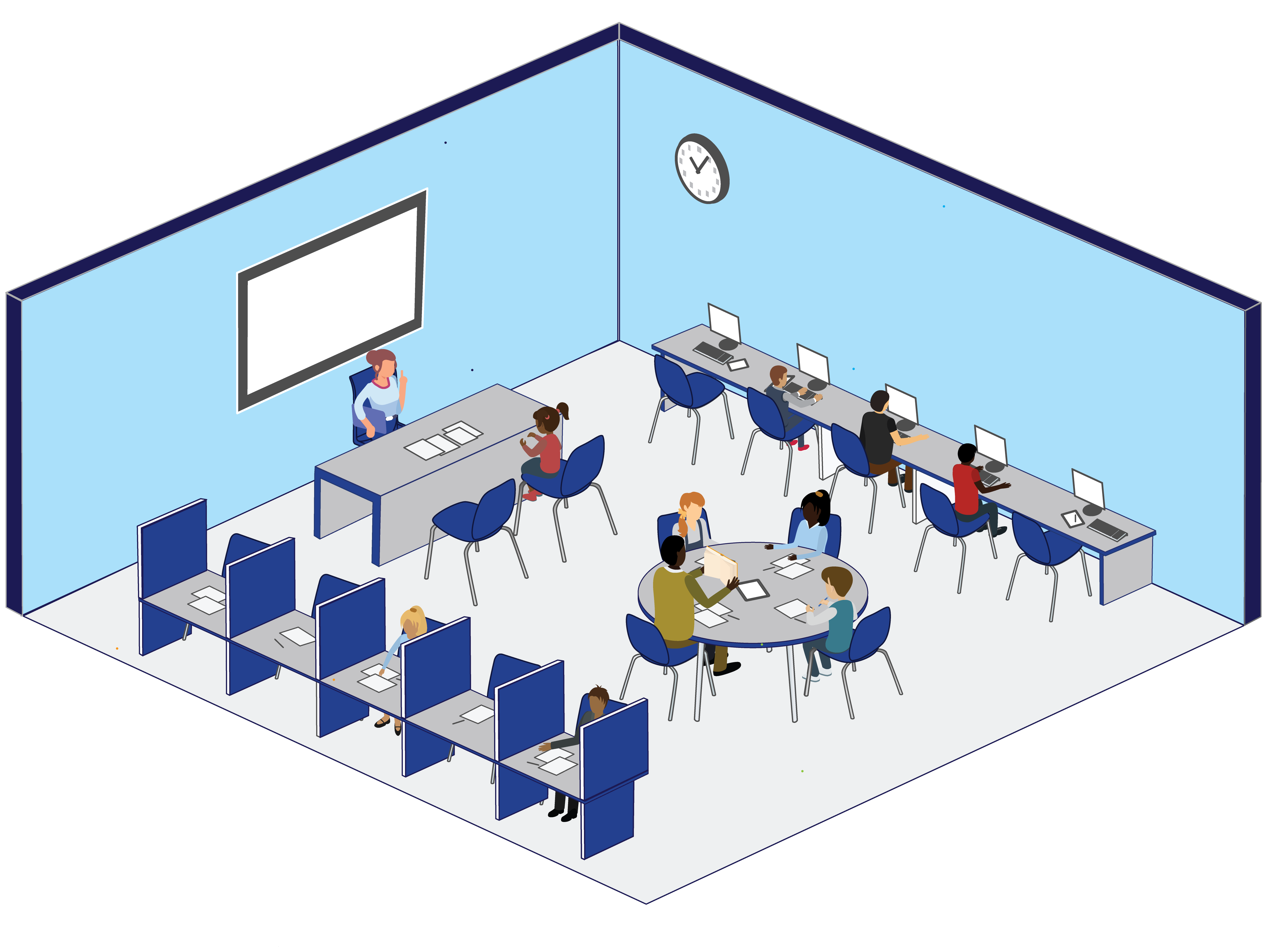

Each student enrolled in the model has individualized behavior programming which is driven by Functional Behavioral Assessments (FBA). We aim to identify the behaviors that continue to disrupt our student’s ability to access their environment and learning. We then use the data collected from the FBA and classroom data to device strategies that get to the root function of the students disrupted behaviors.
Our PALS (Partial Academic and Life Skills) model is an individualized hybrid of our Academic Rotation model and our BEST (Broad-Based Educational Services and Therapies) model. Students in this model receive customized instruction and programming based on their individual needs. For example, some students focus more on academic instruction, while others may require more intensive BEST programming involving life and social skills. Depending on their assessments and individual needs, students will always receive a combination of both models within a PALS learning environment.
The clubs also build a sense of community within the student body. Student Government, for example, is responsible for planning our monthly “Big Event,” whereas the Art Club might be responsible for providing the decorations. The different clubs therefore work together to accomplish a joint goal, and this kind of interaction and collaboration provides limitless—and priceless!—opportunities for our students to learn and grow. Overall, the Sierra School’s Responsibility Clubs give Sierra students a chance to participate in enriching activities while joyfully exploring their own personal strengths and preferences. It’s a win-win situation for everyone involved!
Sierra’s goal is to build the confidence and competence of children facing learning, language, and social challenges through personalized academic interventions. Sierra is committed to achieving success with each student even in the face of obstacles, challenges, and excuses. The program is geared toward preparing youth to become responsible adults who are able to participate in their communities and lead self-fulfilling lives. We aim to build each student’s skills and self-esteem to a level that allows them to return to a mainstream school and become fully functioning members of society. In order to achieve this, Sierra has developed the following expected school-wide learning results. Sierra students will be:
Healthy individuals who:
- Effectively maintain appropriate peer relationships
- Take responsibility for their own physical and emotional heath
Demonstrate healthy life choices
Technologically literate individuals who:
- Demonstrate knowledge and understanding of various computer programs
- Utilize a variety of current technology tools
- Demonstrate awareness of assistive devices that will allow them to better access academic curriculums
Independent individuals who:
- Develop strategies to set specific and attainable goals
- Set priorities and manage time effectively
- Develop a plan for the future
- Develop their ability to have acceptable work habits
Academically competent individuals who:
- Read, write, and speak effectively
- Practice learned strategies to effectively problem solve
- Complete assignments, display organizational skills, and practice study skills
- Access and apply learned information and utilize notes on assigned curriculums
Our Work Experience Program encompasses many areas: classroom instruction, community-based instruction, links to support services. Specific examples include but are not limited to fieldtrips, guest speakers, independent living skills instruction, cooking, budgeting, organizing/cleaning, college tours, industry tours and much more! After being in our Work Experience Program, our graduating seniors leave with a transition portfolio, encompassing all their successes in this program.
Our Work Experience Program provides practical experiences and skills through on-campus jobs, in preparation for off-campus employment. Having firsthand work experience under their belts is a critical component of teaching students what is required to be a good and productive employee. For the 15th year in a row, Sierra was awarded a WorkAbility 1 grant to support our transition efforts.
Listed below are current/past on campus job opportunities:
- Sierra Café/Culinary Program
- Candle Shop
- Sierra Clothing Line
- Student Store
- Gardening
- Van Crew
- Janitorial Services
- Special Events Organizing & Planning
WorkAbility 1 Program
WorkAbility 1 (“WorkAbility”) is a state program that was established in 1981 as a result of a successful two-year pilot study to help special education students gain work experience and skills. Its mission is “to promote the involvement of key stakeholders including students, educators, employers, and other agencies in planning and implementing an array of services that will culminate in successful student transition to employment, lifelong learning, and quality of life.” Sierra Schools began to participate in WorkAbility program in 1997 because of our similar philosophy – taking a holistic approach to educating students, and assessing each one as a whole, helping student reach their goals both on and off the school campus. As part of the WorkAbility Program, each student has a transition binder that is kept in the on-campus transition department. The binder holds a collection of transition-related documents and work that each student can use as a tool and take with them after they leave Sierra and enter the workforce.
What exactly is the WorkAbility all about?
WorkAbility promotes independent living and provides comprehensive pre-employment, employment, worksite training, and follow-up services for special education students who are making the transition from school to work, postsecondary education, or training. Specifically, WorkAbility provides special education students (aged 16–22) with the opportunity to complete their secondary education while also obtaining marketable job skills.
How is WorkAbility funded?
WorkAbility is funded by a federal grant administered by the California State Department of Education.
How does Sierra School personnel offer assistance to the students in the WorkAbility Program?
The school provides the following staffing in the form of a Vocational Education Team (VET) to implement the program: Transition Coordinators, Special Education Teachers and Job Coaches.
What does WorkAbility offer prospective employers?
- Students who have been screened and prepared for employment
- Ongoing monitoring provided by Sierra personnel
- 30–90 hours of training that can be subsidized by Sierra
- Future trained employees who have proven themselves
What are the advantages to our students?
- Job development/placement services
- Support and encouragement from staff
- Pay for job training
- Opportunity to gain work experience
- Assessments of vocational interests and skills
What are the possible outcomes/goals of participating in WorkAbility?
- Students will obtain competitive employment
- Students will become successful, productive, and contributing members of the community
- Students build self-esteem through reinforced positive behavior
Students attend groups focused on anxiety, anger management, social skills, art therapy, self-esteem, and music therapy. These groups, in conjunction with individual support, benefit a wide spectrum of disorders and disabilities. Our therapists work as a collaborative team with parents, school personnel, and outside agencies to best serve our students.
Student Spotlight
Resources

Alexandra Sasaki
Sierra School of Sacramento
2023-2024 Divisional Winner
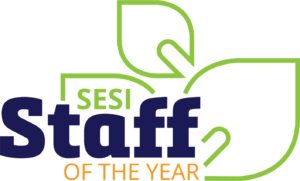
Kili Silafau
Sierra School of Sacramento
2023-2024 Campus Winner

